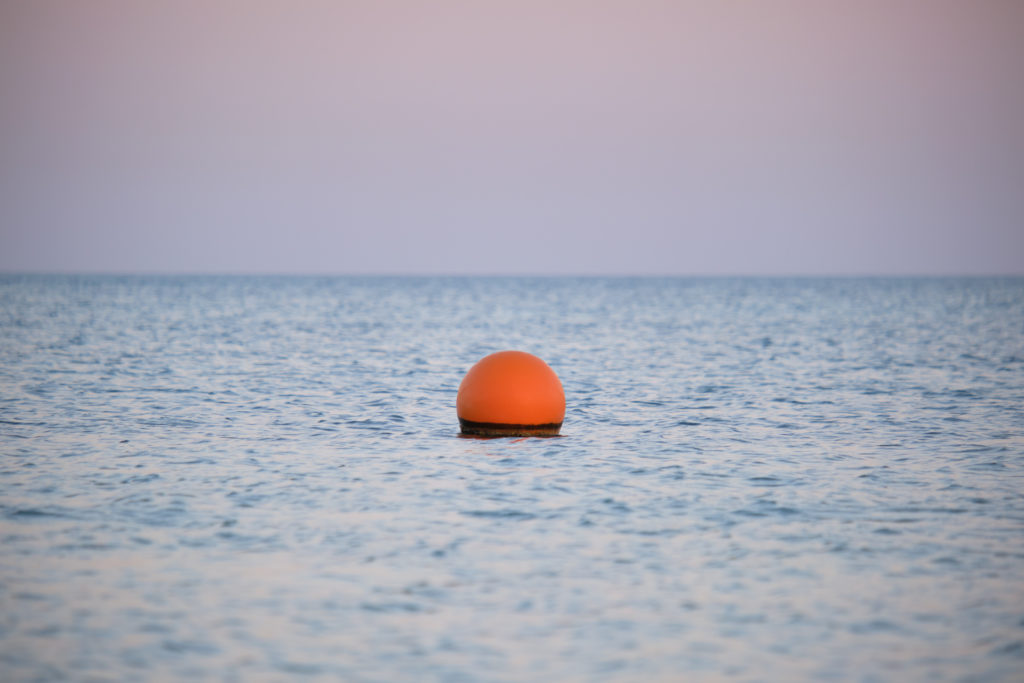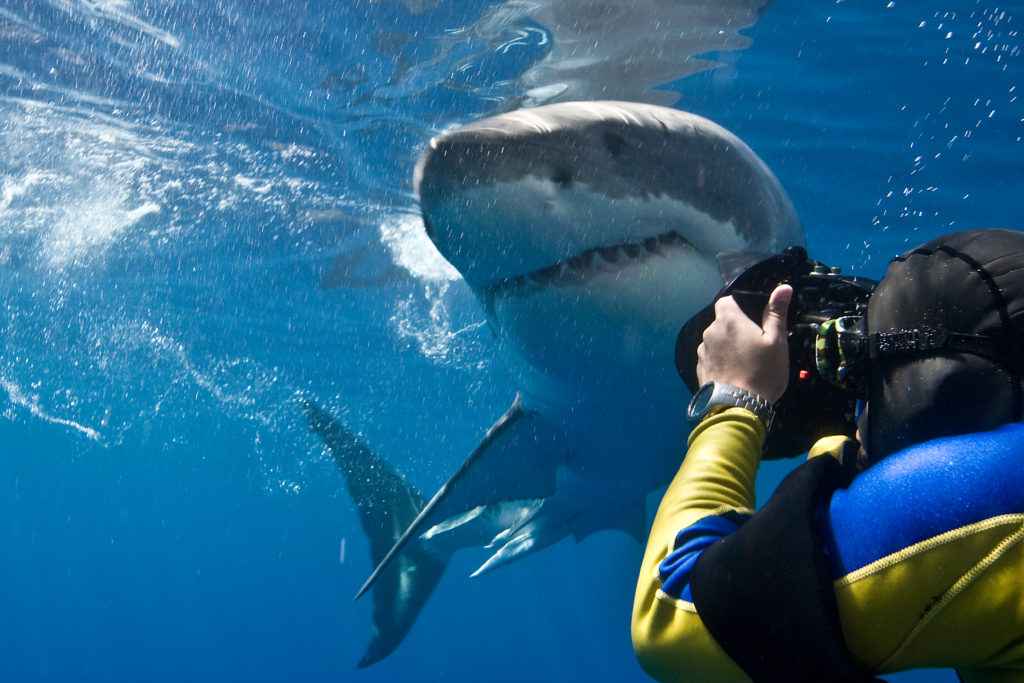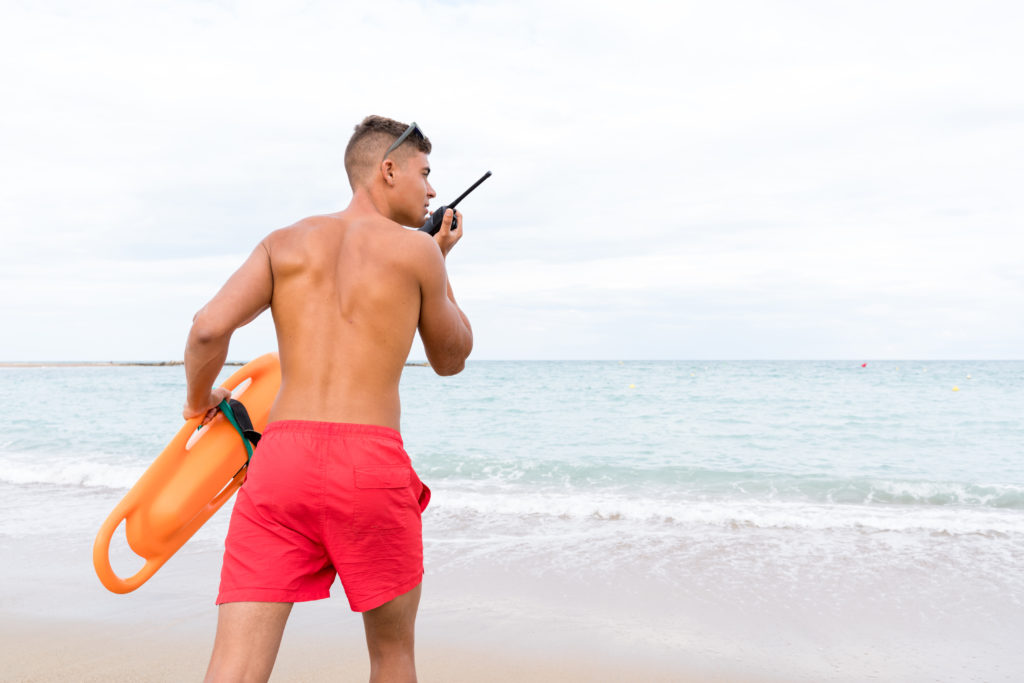Just when you thought it was safe to go back in the water. Southern California beaches could be a bit riskier this summer. A state-of-the-art shark alert system manned and monitored by a skeleton team in Long Beach is running out of funding. With California unable to contribute, researchers are turning to the private sector for help and hoping for the best. But with two months on the clock, time is of the essence.
One of the Best Shark Alert Systems in the World

Seven years ago, when potentially dangerous sharks turned toward the shoreline of Southern California beaches, swimmers relied on eagle-eyed lifeguards for guidance. While that hasn’t changed, SoCal lifeguards received some much-needed support in 2018 with the advent of the shark alert system.
A complex network of buoys, shark tags, and monitoring equipment works together to keep tabs on a little over 200 white sharks that pass along our coastline. When one of these sharks approaches within 300 yards of the system’s buoys, local lifeguards are sent a thorough data profile and can act accordingly. The system has been touted as one of the best examples of shark alert technology in the world.
The Team Keeping Southern California Beaches Safer (and More Educated)
However, cutting edge technology is rarely cheap. The initial $3.75 million that California pumped into the program is quickly running out after lasting a year longer than expected. Unfortunately, the Golden State’s current sobering budget challenges prevent additional state-backed funds when they’re needed the most. The Shark Lab at Cal State Long Beach, which developed and continues to operate the shark alert system, calculates that it will need $7.5 million by June to keep the program afloat.

A team of 15, which includes paid students, manages to keep the program running, safely monitoring Southern California beaches for roughly $1 million in total a year. It may seem like a steep price for slightly less risk. After all, SoCal is hardly a hotspot for shark attacks. The state’s last assumed attack was in October 2023 when a wind surfer disappeared from a beach just north of San Francisco. But the shark alert system isn’t just an expensive safety device. It’s an important teaching tool that is revealing more about California’s shark population and its behavior with each passing year.
A Deeper Look at the Behavior of California Sharks
Thanks to advancements afforded by the shark alert system, researchers are building a deeper understanding of why sharks frequent certain Southern California beaches. The program is also offering more detail regarding California sharks’ relationship to their ecosystem.
But ultimately, researchers are using data provided by the system to clarify that sharks aren’t always the threat popular culture has made them out to be. With this last point, lifeguards have managed to keep popular beaches open more consistently. They’ve even saved California communities millions that would have been lost to closures.
Advancements in Shark Alert Technology
In the early days of the program, the team relied on a series of 120 strategically placed acoustic receivers submerged roughly 100 yards off shore. Roughly once a month, the team would dive down to collect any data recorded. But by this point, researchers couldn’t make use of the outdated information. The team in Long Beach gradually assembled the system currently in use over the years since the initiation of the program. Thanks to the addition of special buoys, lifeguards can receive real-time data notifications directly to their phones.

These are more than simple warnings. Each alert provides a detailed profile of the shark in question. Information includes:
- Size estimate
- Location
- Length of time in the area
- Other areas visited
- Swim path
Since the beginning of the program, the research team has successfully tagged around 300 juvenile white sharks. The researchers continue to monitor 235 of these individuals. With their system, they can effectively transmit the collected data in real time to lifeguards as far south as the Mexican border and as far north as Morro Bay.
What’s Needed to Keep Monitoring Southern California Beaches
The Shark Lab would ideally like to upgrade their transmitters and continue tagging new sharks. But if funding runs out on the program, the team will need to return to the water one last time to pull up the equipment. With California unable to assist, they’ve begun the search for private donors to keep their program swimming forward. But until a patron comes forward, the program is dead in the water and Southern California beaches are worse off for it.
With a brand that says as much as JohnHart’s, Senior Copywriter Seth Styles never finds himself at a loss for words. Responsible for maintaining the voice of the company, he spends each day drafting marketing materials, blogs, bios, and agent resources that speak from the company’s collective mind and Hart… errr, heart.
Having spent over a decade in creative roles across a variety of industries, Seth brings with him vast experience in SEO practices, digital marketing, and all manner of professional writing with particular strength in blogging, content creation, and brand building. Gratitude, passion, and sincerity remain core tenets of his unwavering work ethic. The landscape of the industry changes daily, paralleling JohnHart’s efforts to {re}define real estate, but Seth works to maintain the company’s consistent message while offering both agents and clients a new echelon of service.
When not preserving the JohnHart essence in stirring copy, Seth puts his efforts into writing and illustrating an ongoing series entitled The Death of Romance. In addition, he adores spending quality time with his girlfriend and Romeo (his long-haired chihuahua mix), watching ‘70s and ‘80s horror movies, and reading (with a particular penchant for Victorian horror novels and authors Yukio Mishima and Bret Easton Ellis). He also occasionally records music as the vocalist and songwriter for his glam rock band, Peppermint Pumpkin.


